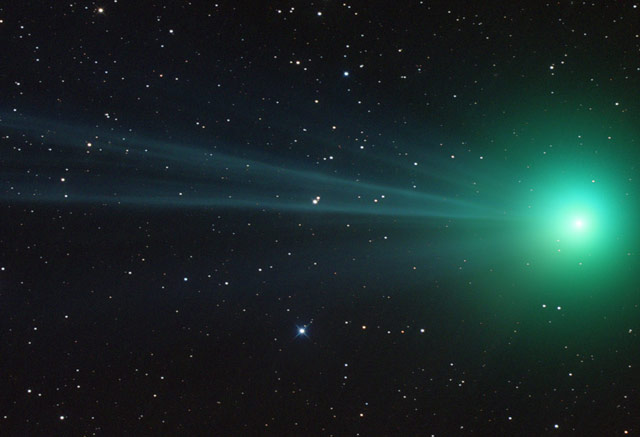Hi everybody
Here's the latest article from the Astronomy site at BellaOnline.com.
What Color Is a Nebula
Nebulae are distant clouds of gas and dust. We see pictures of them in glorious color, but is that what we would we see with our own eyes if we were closer? If not, what color is a nebula?
http://www.bellaonline.com/articles/art300516.asp
*Holiday greetings in galaxies*
Here is a greeting written using galaxies as the letters: http://www.pinterest.com/pin/250090585533708900/. A map of the sky shows where each galaxy could be seen. I should add that you'd need a powerful telescope to find them, as they're very distant objects. All of the images are from the Sloan Digital Sky Survey, which Galaxy Zoo volunteers classified. You can find out more about the Galaxy Zoo project in “Citizen Science in the Electronic Age”: http://www.bellaonline.com/articles/art19533.asp.
*Birthdays*
(1) Isaac Newton, born on Christmas Day 1642. He revolutionized our understanding of motion and of celestial mechanics. His work explained how Kepler's laws of planetary motion – which were simply descriptive, not explanatory – worked. Learn more about this extraordinary man in “Isaac Newton – His Life”: http://www.bellaonline.com/articles/art48510.asp.
(2) Mary Somerville, born December 26, 1780. Despite the handicap of being female, she was a renowned scientific polymath. She was Scottish, and since university education was denied to women in Britain, was largely self-taught. Yet she became a science writer in several scientific fields, known for turning complicated ideas and mathematics into books for interested non-scientists. For her writing on astronomy, she was awarded honorary fellowship in the Royal Astronomical Society. She and Caroline Herschel were the first women to be so honored. Somerville College, Oxford was named for her.
(3) Johannes Kepler, born December 27, 1571. Kepler made use of the extensive and accurate observations of his mentor Tycho Brahe. From them he finally devised his laws which described planetary motion. He make his great breakthrough when he gave up the ancient notion that the orbits were circular and realized that they were elliptical. You can read more about “Johannes Kepler – His Life” here: http://www.bellaonline.com/articles/art36947.asp.
(4) Arthur Eddington, born on December 28, 1882. Eddington was one of the great astrophysicists of his time, as well as a science popularizer. His main field of study was stellar evolution, but perhaps he's best known for making the eclipse observations that supported Einstein's theory of general relativity. You can read the story of “Einstein's Eclipse” here: http://www.bellaonline.com/articles/art183980.asp.
Please visit astronomy.bellaonline.com for even more great content about Astronomy.
I hope to hear from you sometime soon, either in the forum or in response to this email message. I welcome your feedback!
Do pass this message along to family and friends who might also be interested. Remember it's free and without obligation.
I wish you clear skies.
Mona Evans, Astronomy Editor
http://astronomy.bellaonline.com
One of hundreds of sites at BellaOnline.com
.
astronomy Newsletter








